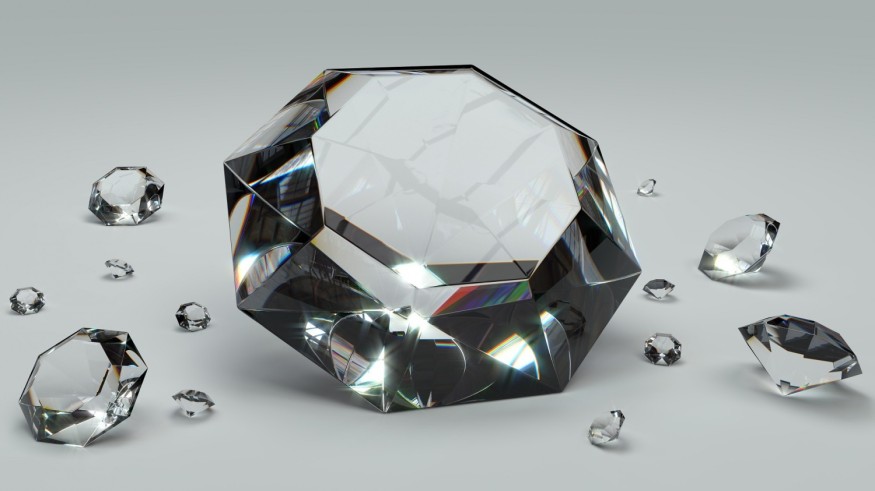Researchers believe that when a dwarf planet and an asteroid collide, a rare type of diamond will be formed. This strong diamond structure is called the lonsdaleite. However, researchers discovered another method of producing it.
Lonsdaleite New Formation Process
According to Dougal McCulloch, co-author of the paper published in the Proceedings of the National Academy of Sciences, there is strong evidence that a newly discovered formation process for lonsdaleite and regular diamond exists. He compared the process to a supercritical chemical vapor deposition process in space rocks.
Chemical vapor deposition (CVD) is one method used in the laboratory to create diamonds. The process involves growing them in a specialized chamber.
McCulloch and his colleagues used electron microscopy to examine slices of meteorites containing lonsdaleite to determine the ideal conditions for the material to form. They believe the collision shattered the asteroid into meteorite fragments.
Lonsdaleite was formed when graphite interacted with a supercritical fluid at high temperatures and moderate pressures. It was formed when graphite crystals in hot meteorites morphed and organized themselves into a hexagonal structure.
The findings are consistent with previous research that discovered signatures in diamond-filled meteorites compatible with low-pressure CVD processes.
However, unlike previous research, this one suggests that lonsdaleite is formed in the mildly pressurized environment of an impact between a sufficiently sized mass and a dwarf planet, rather than in the highly pressurized mantle of a larger planet, as is the case with traditional diamond.
According to the researchers, if the suitable mineral composition is subjected to a large enough shock, hot gas and fluid could theoretically disperse along fractures and grain boundaries, shocking graphite into the hexagonal structure of lonsdaleite. As the rock cools, these regions may form super-hard material subgrains.
Geologist Andy Tomkins from Monash University in Australia said that nature has thus provided us with a process to try and replicate in industry.
He stated that lonsdaleite could be used to make tiny, ultra-hard machine parts if an industrial process that promotes replacing pre-shaped graphite parts with lonsdaleite can be developed.

ALSO READ: The Billion-Year Wait is Over: Say Hello to Instant Diamond Bling!
Lonsdaleite Diamond Structure
Lonsdaleite has a hexagonal crystal structure, which differs from the usual cubic structure found in most diamonds. Because of this, they believe it can be 58% harder than its counterpart.
Although scientists have an idea about the diamond's structure, they lack sufficient information. They have this difficulty because it does not form naturally on Earth. They even wonder where it came from and how it was formed.
But through research, the team discovered the largest lonsdaleite crystals they've ever seen by examining tiny grains of meteorite, which are far thinner than a strand of human hair.
Lonsdaleite Origin
Lonsdaleite was discovered in a meteorite in 1967, according to Science Alert. It has mostly been discovered in ureilite meteorites, a rare type of stony meteorite thought to have formed from a long-obliterated dwarf planet. Nonetheless, this dwarf planet is now strewn across the solar system as small pieces of space debris.
A group of researchers contended that lonsdaleite was not a naturally occurring material but a conventional diamond in disorder. With this argument, it is not surprising that scientists can create it in a laboratory at high temperatures.
RELATED ARTICLE : Canyon Diablo Meteorite that Slammed Earth 50,000 Years Ago Features a Different Diamond Crystal that Can Improve Electronics
Check out more news and information on Space in Science Times.
© 2025 ScienceTimes.com All rights reserved. Do not reproduce without permission. The window to the world of Science Times.











